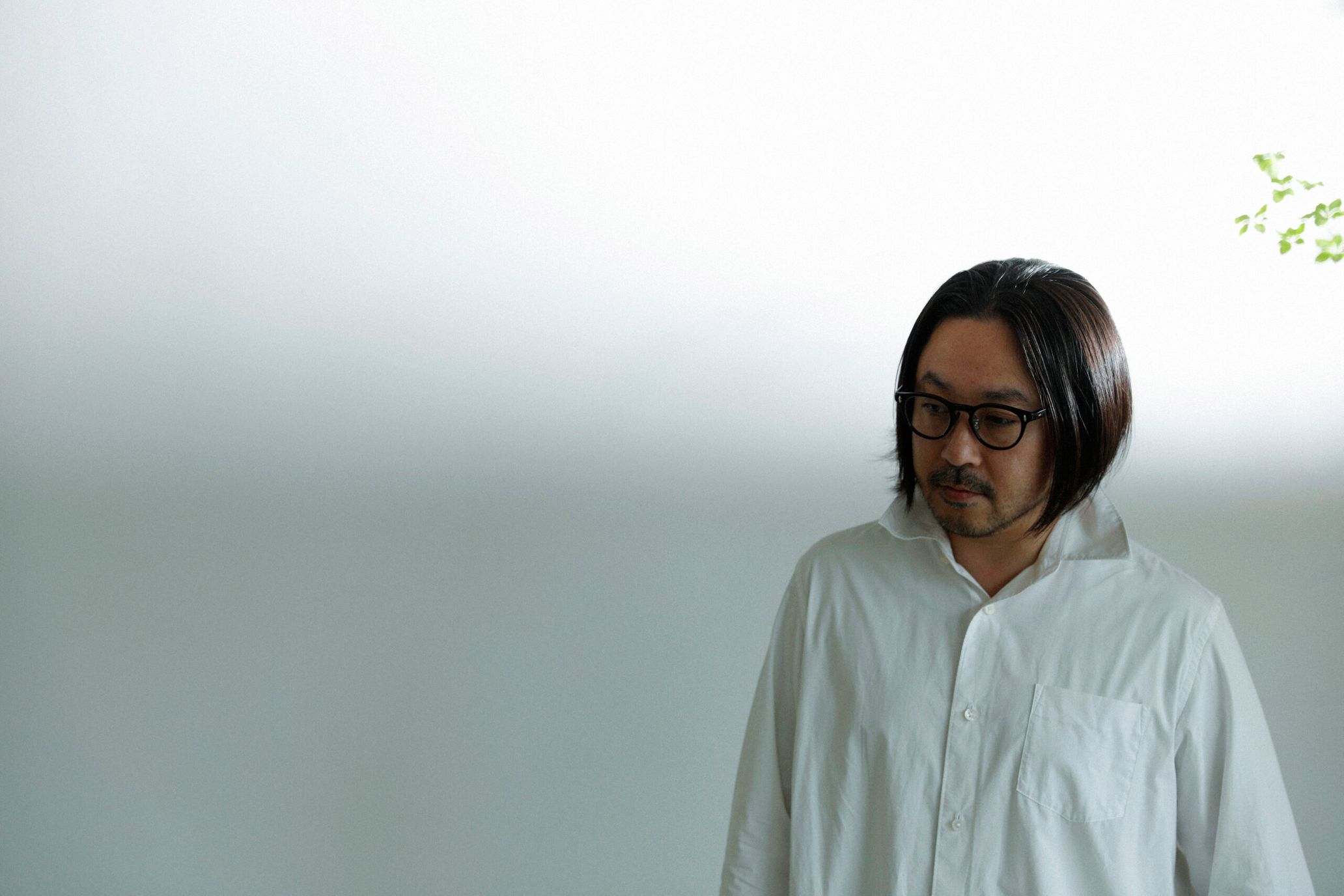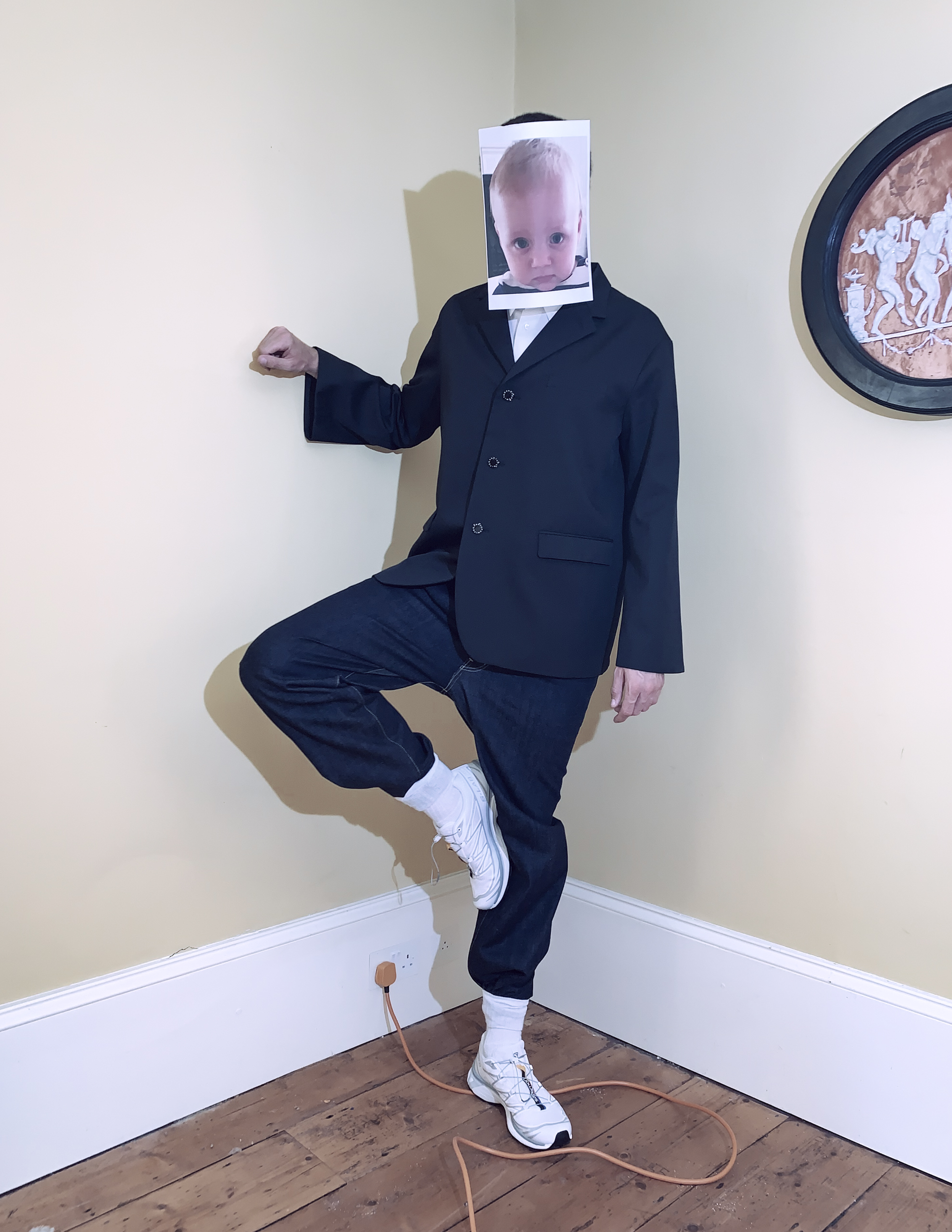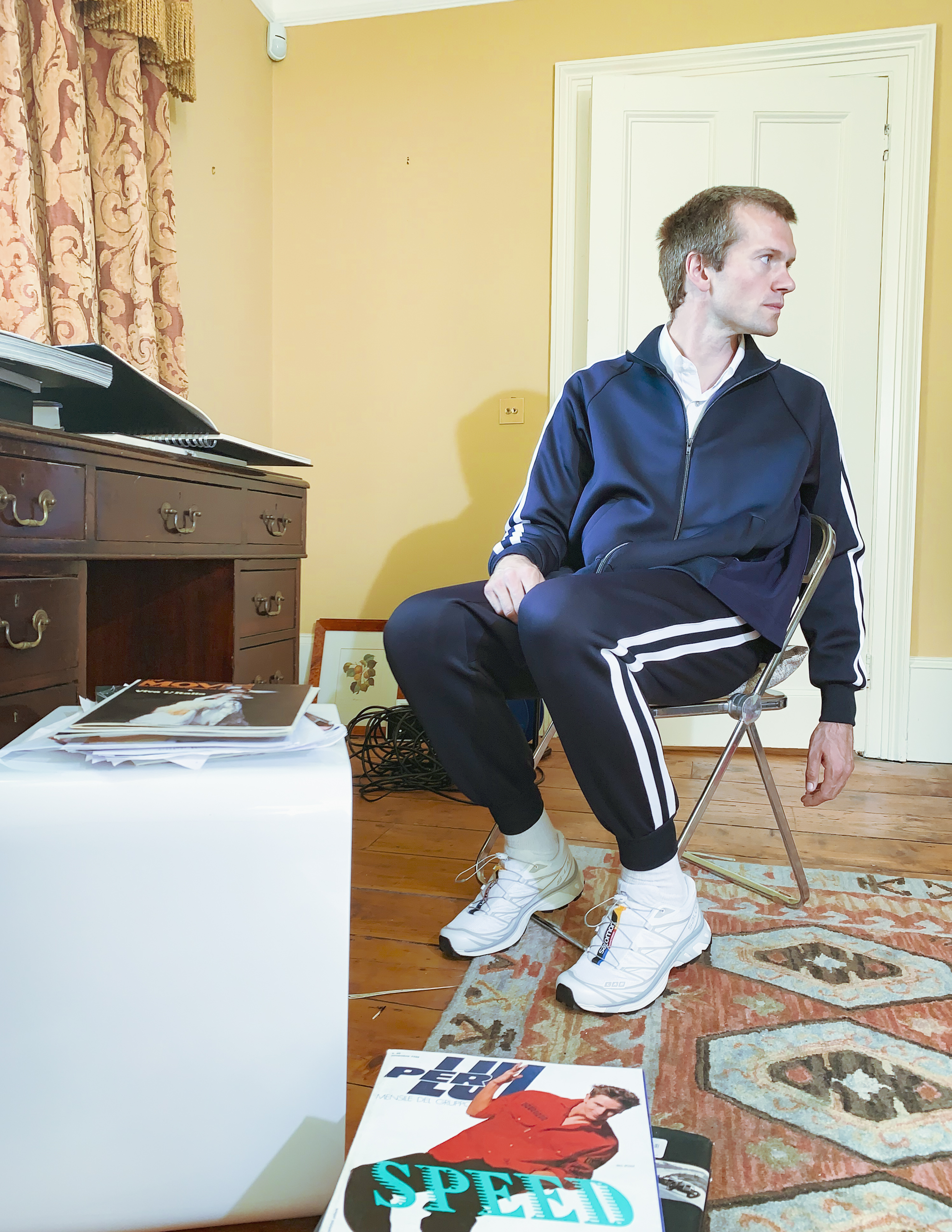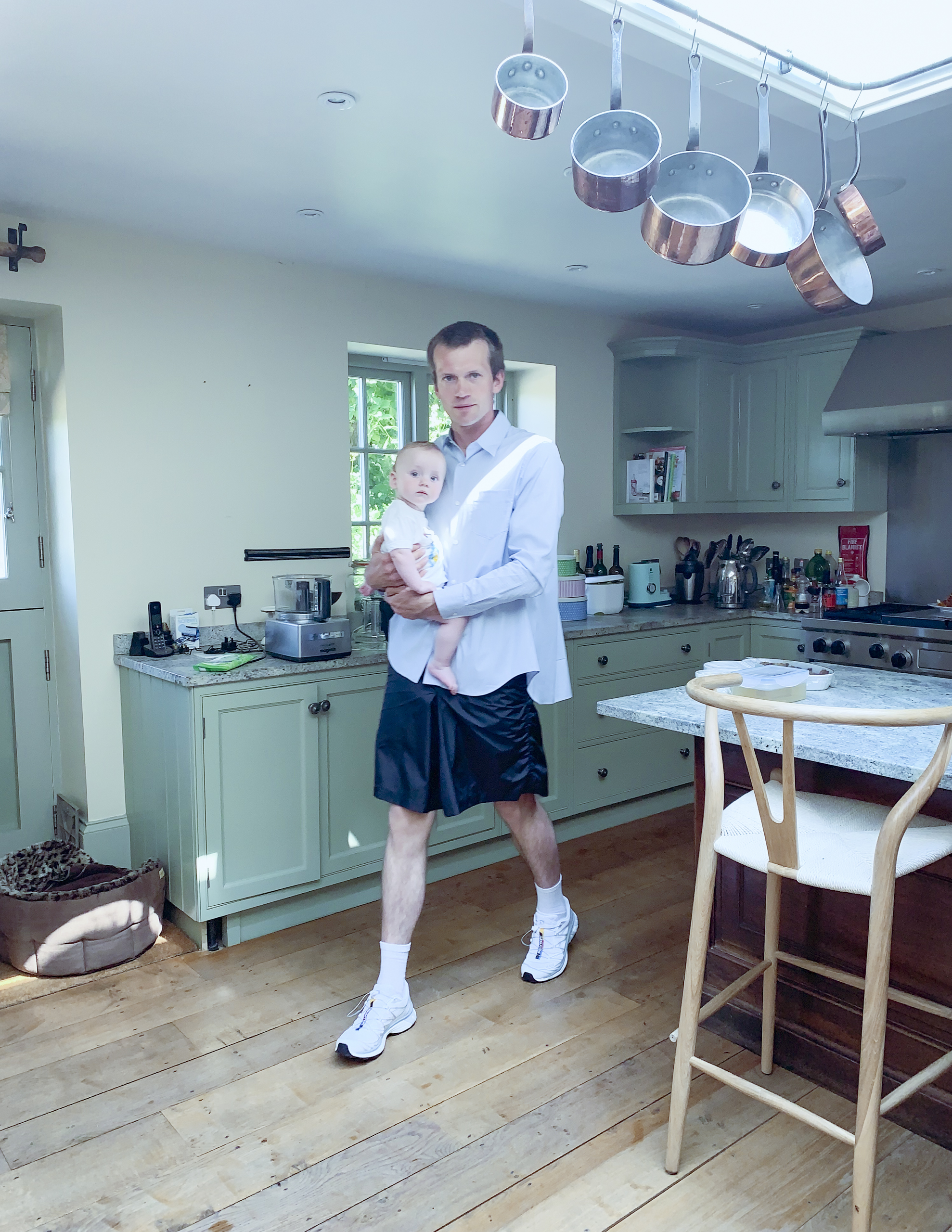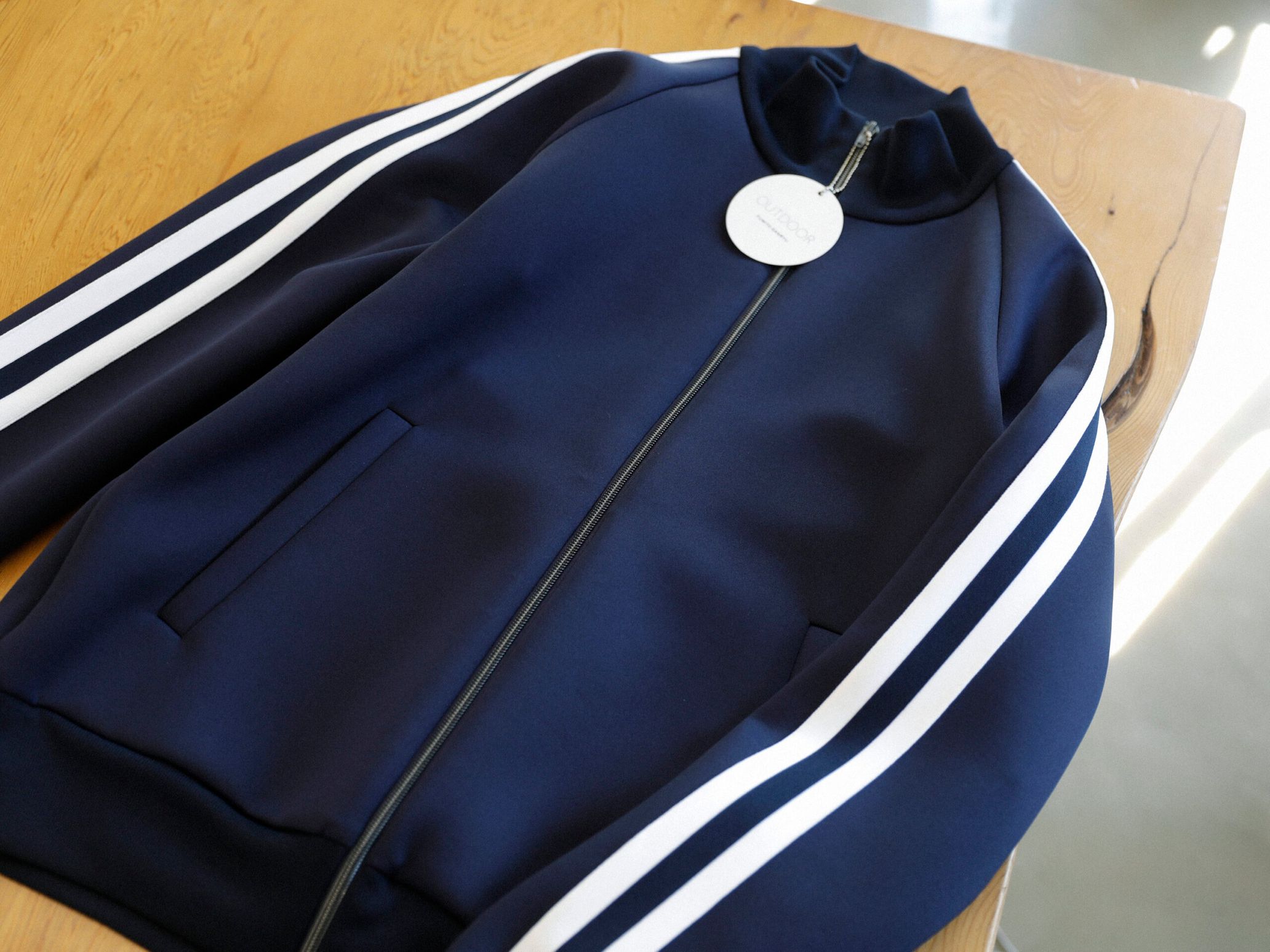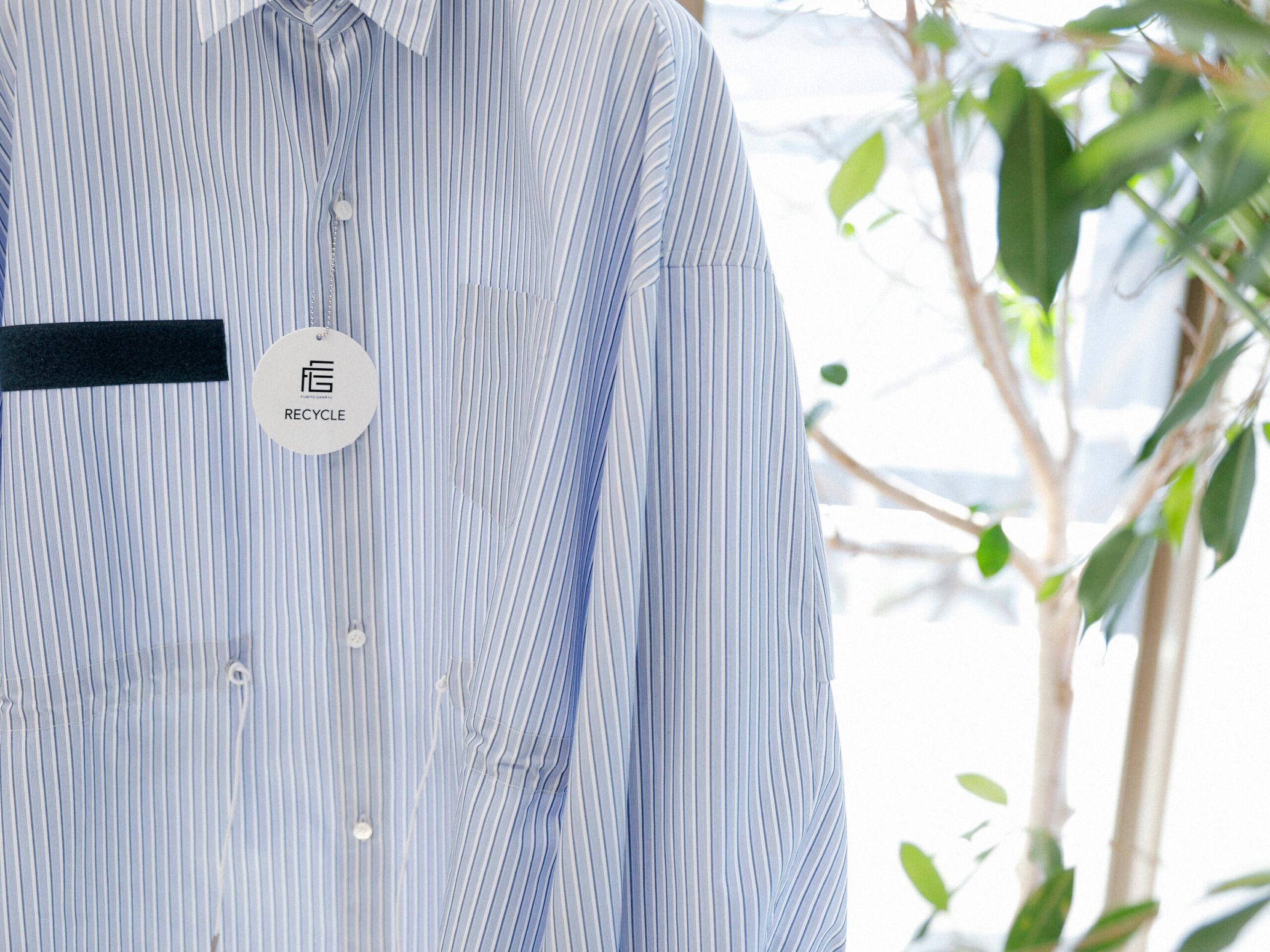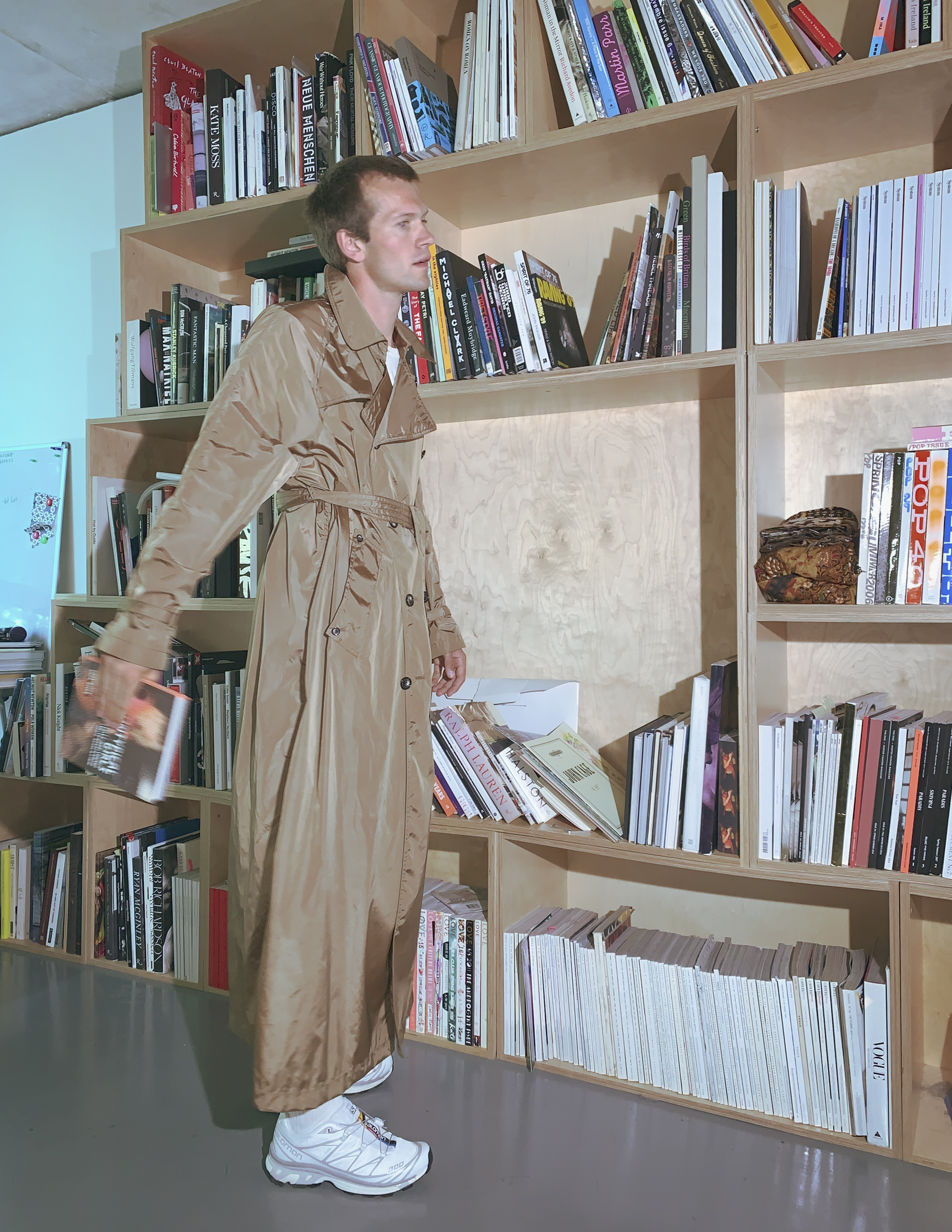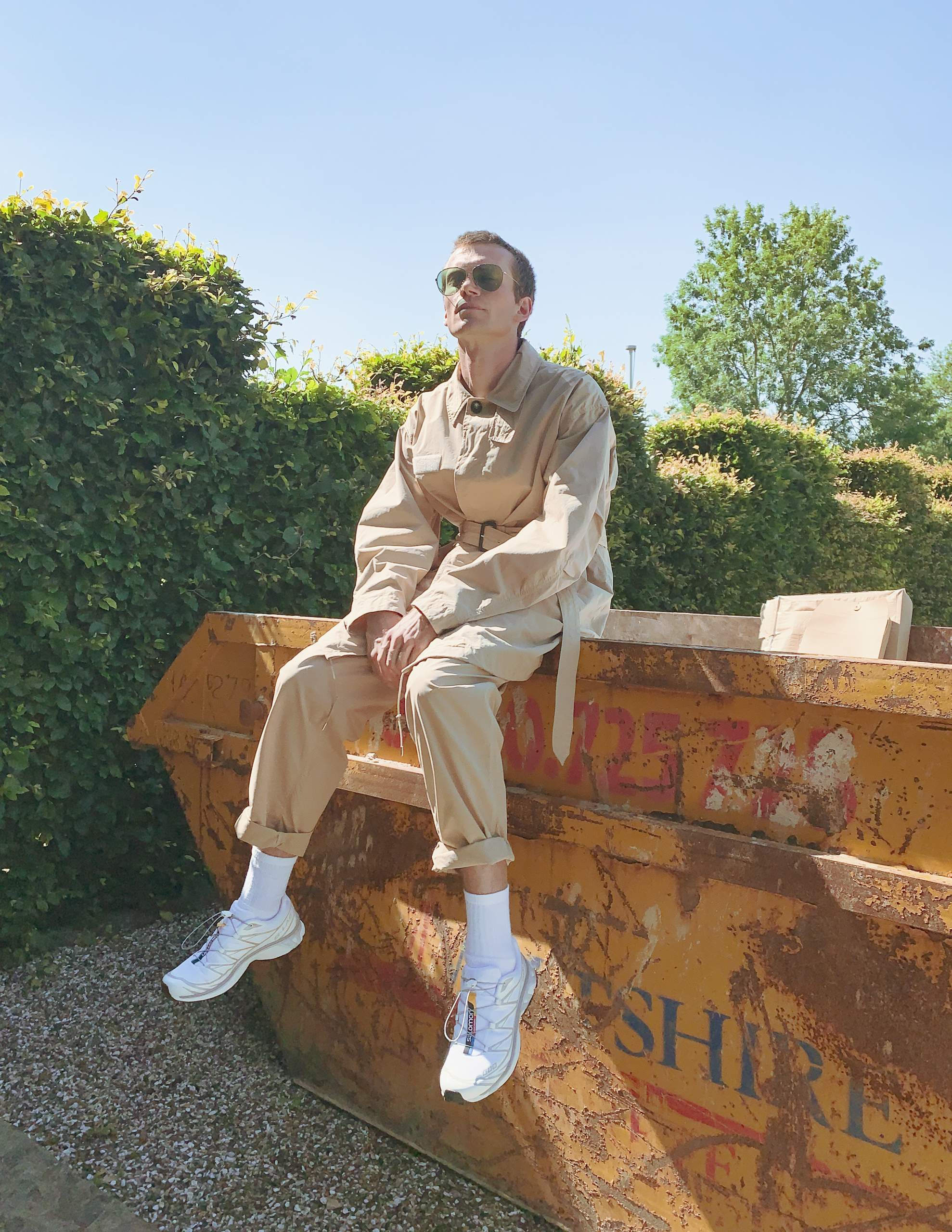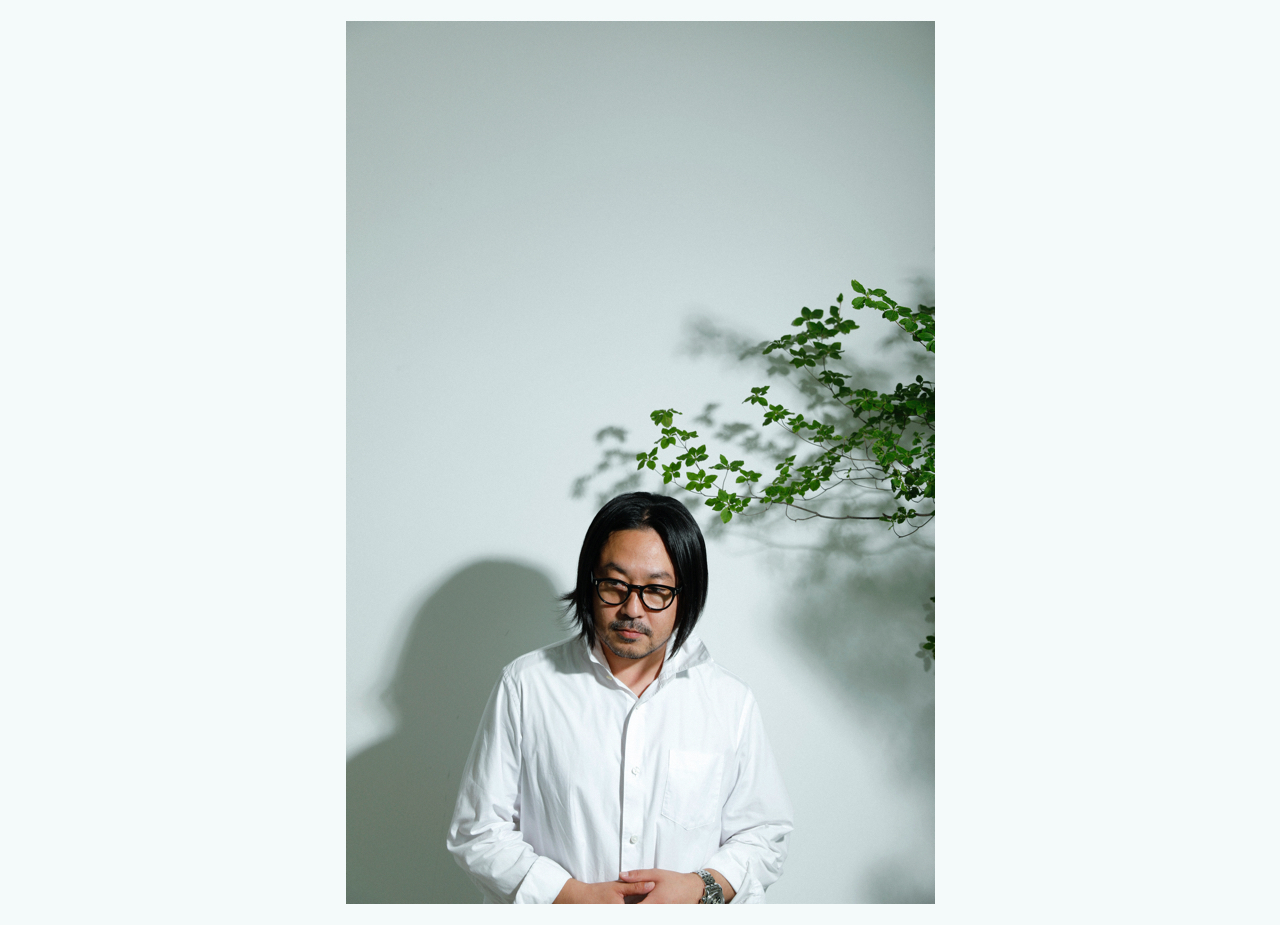Before the street fashion whirlwind occurred in the late 2010s, the street-infused mode style was introduced to the world by Fumito Ganryu. However, after he founded his brand, Fumito Ganryu, in 2018, he started proving that his aptitude is not only limited in the scope of street style.
His new aspect was especially significant in his 2019 Autumn Winter collection. The brand’s fashion show at Paris Men’s Fashion Week was constructed of tailored style, which was different from his past styles potent in street style components. The collection embodied the representation of modern mode street-style and oversized silhouettes; however, the designs were not on the casual side, but rather on the traditional men’s wear side, which was classically turned into king size—the designs reached a level equivalent to that of a counterpunch to the current generation’s fashion king, street fashion, and it seemed as if the brand was implementing street style only to deliberately reject it.
Fumito Ganryu constantly updates his own unique style. In order to deliver his bona fide words, we will be providing this long interview in three installments. In vol.1 we unveil the background of his 2021 Spring Summer collection that is currently out in the market.
Linking between social issues and creations
――The 2021 Spring Summer collection seemed to be compromised of the most casual designs out of all the Fumito Ganryu collections since the debut, and they were almost like loungewear. There was a certain ambiguity to the clothes as they could be worn both inside and outside, and I felt like christening the collection, something like “New Room Wear.” Were the designs influenced by the dramatic changes in lifestyle due to the outbreak of the novel coronavirus?
Fumito Ganryu (Hereinafter Ganryu): For me, I wanted the clothes to be something very pragmatic, so not only for this collection, but all the collections are based on the premise of different circumstances and moods. I’m sure there are different directions of designs in the world; I don’t mean to deny other different mindsets, and I’m always trying to maintain my stance of proposing ideas to others like, “maybe these kinds of clothes will be in need?” Having that as a base, I came up with the designs envisioning that I personally wouldn’t want clothes that are only worn when I go out.
――Since the pandemic, people spend more time indoors, and I feel like we’re in a time now where clothes that are only made to be worn outside are no longer a match for our lifestyle.
Ganryu: I wanted to create a hybrid lineup, by which I mean mixing comfort or so-called loungewear-esque features in the type of clothes people wear for going out. Right at the moment when we started producing the collection, I knew that I wanted to set a theme considering the delivery timing—for the mood of the collection to be vibing with the time when the collection is delivered.
――I see. But they aren’t just loungewear, and I can feel design aesthetics from Fumito Ganryu 2021 Spring Summer collection.
Ganryu: I, of course, had in mind that I shouldn’t be making mere loungewear. I wouldn’t say this stay-at-home circumstance is going to last forever—that’s not realistic. Of course, there are some people who seriously think that way. But, in order to live, people can’t shut themselves in for a long period of time. I’m sure there are a lot of people, who are looking forward to spreading their wings as much as they want when things settle down and freed from the suppression. So, we came up with clothes that are loungewear that look like town wear, enabling people to go out in clothes that embody coziness of loungewear, and can be worn both for indoors and outdoors; we made the collection under the theme, “FREE ACCESS” as we wanted to make clothes that aren’t transient yet universal.
――I’d like to ask you about the items a bit more specifically, but first, the tracksuits that appeared in the 2021 Spring Summer collection were in readable. They were something I’ve never seen in the past Fumito Ganryu collections.
Ganryu: I guess it was quite daring in a way.
――I think so. Why did you decide to include those tracksuits in the collection?
Ganryu: You see, in Japan, there are people who like to wear tracksuits as loungewear. And I wanted to propose that style to people overseas. They are also worn for the completely opposite occasion of physical sports. I think tracksuit is a single garment with multifaceted attributes that can also reach the field of contact sports and enables us to construe various paradoxical elements at the same time—so that’s why I wanted to make a set of tracksuits.
――I see, so this tracksuit is an emanation of such idea.
Ganryu: But we’re not using fabrics used for conventional tracksuits, yet instead, we’re using special stretch-bonding materials to achieve that high-quality texture. Regarding the small details, we’ve tried our best to select the lightest materials that don’t make the item look cheap.
――If you feel it, it’s quite puffy; it’s an interesting fabric.
Ganryu: It’s the kind of texture that’s so nice that makes you want to touch forever. The armpits are made with special features for ventilation, and if you pull up the side zippers the expansion panels appear. It can be worn for sports as it provides ventilation and functional range of motion; it’s a garment with augmented design that can be donned as cozy loungewear, town wear, and in various occasions.
――The track pants are unique as they are in Sarouel form, and it feels like there are multiple looks and ways of wearing hidden in this piece.
Ganryu: Sarouel pants are extremely high-rise retaining a spacious space, which makes it a relaxing and liberating fit. The unique structure is a design and creates comfort at the same time. The design itself is both the function and solution. My favorite approach in designing is exploring and proposing logical designs that project multiple guidelines.
Being fair and just, and pursuing the society
――Regarding the shirt embodying mods coat details, the form of the sleeves was very fascinating, which by the way, I didn’t notice from the look photo and found out when I actually tried it on.
Ganryu: I’m happy to hear so.
――I thought it’s made in a women’s wear kind of distinctive shape that we don’t get to see in men’s wear. Do you aim to obscure the line of gender between male and female?
Ganryu: I think things slowly change through generations, and from an ethical point of view, there are many things that need to be ameliorated, but I think it’s healthier not to lose uniqueness. We need to, sort of, always consider what’s fair and just (the act of discerning good is good and bad is bad, regardless of the situation); things with extreme mindsets, for example, things made really ragged and “very manly,” or really feminine and “very womanly” may appear intriguing, but while having them in mind, I personally try not to abide by gendered traits when creating things.
――As I’m hearing your thoughts, it seems like you focus strongly on consumers’ perspective—is that something you’ve always pay heed to?
Ganryu: It might sound dramatic but making things that aren’t in people’s best interests can turn into a mere hobby, and I think it’s rather more important to come up with proposals that are on point with regard to serving the needs of people. However, I don’t want to have a stance where I’m only trying to flatter people like, “you wanted this type of clothing, right?” But instead, I try to envision people’s needs and mindsets in the near future, and try to translate them into designs and be more like, “how would you like to have something like this?” Generally speaking, clothes are crucial in people’s lives, and I think fashion harnesses a potent power that moves people’s hearts.
――Fashion is creative but it’s also business, and in order to gain fans of the brand, you need to propose clothes that make people go, “I want this, I want to wear this.”
Ganryu: Even if you’ve thought really carefully, there are still things you won’t know until you try; a professional fashion designer that I conceive of can come up with the best creations possible while having a determined business goal. If realness is being ignored completely, I want to take media and fashion separately.
――In order to capture people’s needs, is there something you practice on a regular basis?
Ganryu: Obviously, I study fashion design, but at the same time, I try to see things other than fashion. While working and designing, I basically listen in fast-forward, like Speed Learning, to various news, play videos of people with high literacy levels on social trends and whatever they are interested in, and debates among trustworthy job holders; I also ruminate as I read reference books. I sometimes have to really rack my brain to come up with ideas, but once an idea hits me, it just floods out front here—so basically, I try to shift my focus on social trends and take a lot of time contemplating.
――I’ve never met a designer who listens to things like news while working. So, would you say those social trends you absorb from news are naturally imbued in or percolated through your designs?
Ganryu: No, I wouldn’t say the social trends are percolated through my designs. I just try to envision things from them. The act of envisioning is equivalent to an act of pondering, and it’s part of my creative process. I’ve admired [Albert] Einstein since I was little, but there’s one of his quotes that I think is wrong: That is, “Information is not knowledge.” In fact, I think information is knowledge. If I were to correct his words, it would be, “Information is not intelligence.” Accumulating and updating knowledge with information is incredibly important, and knowledge is the only source that guides us to our genuinely realistic goal of knowledge. Someday, I want to make a T-shirt that says, “Information is knowledge. Not intelligence” [laughs]. Yet, I feel bad if Einstein had just said it wrong and didn’t mean the way he said it, and if that’s the case, I don’t want to jump on his mistake by making the shirt.
――That’s very informative [laughs].
Ganryu: It’s all because I love Einstein [laughs]. Sometimes, when you like something, you do research and find something that makes you think, “this ain’t right.”
――For the looks from your 2021 Spring Summer collection, you had sent the samples to Wiltshire in the UK and had the stylist Tom Guinness wear them. Why did you decide to shoot the looks this way, instead of hiring models and doing the shoot in Japan?
Ganryu: Tom Guinness is a stylist I was introduced to by our CMO Nakamura (Seiya Nakamura: CEO of Seiya Nakamura 2.24 and CMO of Fumito Garyu) and I was really allured when I saw Tom’s styling as it was nonchalant and cool. We’re also having him do the styling for our upcoming 2021 Autumn Winter collection, which we announced during Digital Paris Fashion Week.
――What did you find attractive about Tom Guinness’s works?
Ganryu: When it comes to lightly and concisely portraying a core subject or heavy theme like social circumstance or trends, while also depending on a catchy phrase like “FREE ACCESS,” I felt like Tom Guinness is the right person who would have a special affinity for these things and can interpret them in a light manner.
Abundant options are what make people’s minds opulent
Fumito Ganryu 2021 Spring Summer Visual&Sound installation
――The video you’ve released concurrently with the looks was intriguingly mysterious. It shows Tom Guinness hanging the clothes on a rack and putting things away, which are customary actions, on multiple separate monitors. It felt so surreal that even these basic actions you would see on a daily basis seemed mysterious.
Ganryu: The footage was also made with our CMO Nakamura, and the visual expression and direction were decided together with him. As it was for the world’s first digital fashion week, Nakamura and I unanimously agreed to take a digital approach and thought that it would be in vain if we lurched towards the normal approach. I obviously don’t mean to deny the conventional runway format; it’s just that I didn’t want to do it this time. Since it had to be expressed digitally, I felt this indelible discomfort in taking the same physical approach.
――Was there anything new you’ve discovered from this unusual show experience ?
Ganryu: I again felt the rationality of runway shows. By parting from the physical show, I’ve re-acknowledged the reason to never-change and stay the same as a creator. Of course, in the future, I want to explore and propose rational expressions or dramatic renditions that can only be achieved digitally, though, in regard to “delivering” information or beliefs, I would say physical shows are way more rational. How the garments move in response to the wearers’ motions, gauging how comfortable and exciting the clothes are from the mood exuding from the wearers, whether the clothes reach the level of perfection or not, and whether they are realistic or not—I think these things can never be fooled on the actual physical stage.
――I can sense that from watching the runway shows. The bonafide value and traits of the garments can only be emanated by people actually wearing them.
Ganryu: If the garments were only objects, they may be good enough in still pictures, yet, they aren’t ornaments and they are meant to be worn. Regarding the rendition, music is of coursed used, but if we wanted to do it without music, there would still be a silent message expressed through the venue, models, and hair and makeup, and we can present our works in only about 10 minutes. Runway isn’t an extraordinary space, but it’s a stage for rational form of expression, and that’s what I’ve been reminded of from being away from it.
――I really think the collection is presented the best in a runway format. Is there no potential in digital presentations?
Ganryu: I absolutely think there is potential in digital presentations. I think it’s good that we now have more opinions and get to choose between ‘physical’ and ‘digital.’
――So it could be said that globally, people’s lives have been restricted due to the circumstance, however, in the fashion industry, a new option of digital presentation was born.
Ganryu: Under the pandemic, how come we have to feel this much frustration. I’m sure each person has their own reason for their frustration, and one of the causes could be the dynamic restriction and options being taken away when there are so many desires. ‘This can’t be done,’ ‘this is the only way,’ or ‘this has to be done’—I think it’s because the suppressed thoughts keep compiling without ever being resolved. If only we were to have the nutrients called ‘options,’ we won’t be losing the opulence of our minds.
(Continuing on to Vol.2)
Fumito Garyu
After he graduated Bunka Fashion Graduate University and worked at COMME des GARÇONS, in 2018, he founded his own label, Fumito Garyu. The brand presents diverse and updated border-crossing styles conflating the iconic street style with sporty or tailored styles; the brand’s collections feature daily wear that are pragmatic yet with designs that critically embodies a smattering of the society.
Instagram:@fumitoganryu
Photography Shinpo Kimura
Translation Ai Kaneda

